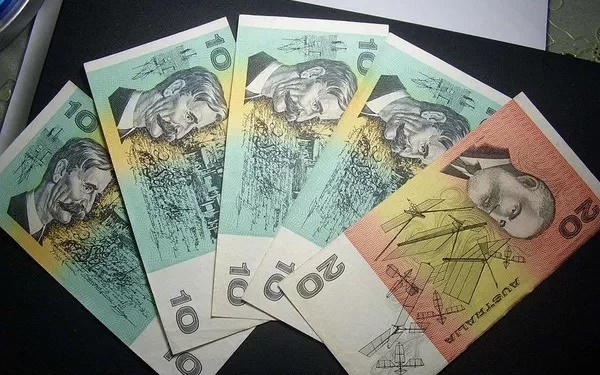The Reserve Bank of Australia (RBA) plays a pivotal role in the Australian economy, yet many misconceptions surround its functions and responsibilities. To gain a clearer understanding of the RBA, it’s crucial to address some common misconceptions and answer the fundamental question: What does the RBA do?
Introduction
The Reserve Bank of Australia, established in 1960, is Australia’s central bank and is responsible for the nation’s monetary policy, currency issuance, and financial stability. However, people often misunderstand the exact role and functions of the RBA. It is not just a regulator or a lender but has a much broader and nuanced set of responsibilities. To shed light on these misconceptions, this article will delve into what the RBA does and its significance in the Australian economy.
Monetary Policy and Interest Rates
One of the most prominent functions of the RBA is the formulation and execution of monetary policy. This entails managing the cash rate, which influences interest rates throughout the economy. Contrary to common misconceptions, the RBA does not directly set individual interest rates for home loans or credit cards. Instead, it uses the cash rate as a tool to influence these rates.
The RBA uses the cash rate to maintain price stability, aiming to keep inflation within a target range of 2-3% annually. When inflation is too low, the RBA may reduce the cash rate to stimulate economic activity. Conversely, when inflation threatens to rise above the target range, the RBA may raise the cash rate to cool down the economy. This control over interest rates is a critical aspect of the RBA’s role in maintaining economic stability.
Currency Issuance and Management
The Reserve Bank is also responsible for the issuance and management of the Australian dollar. It designs, produces, and distributes currency notes and coins. While most people are aware of the RBA’s involvement in issuing currency, they might not fully grasp the complexities involved in ensuring a robust and secure currency system.
The RBA oversees the quality and security features of banknotes to protect against counterfeiting. It is a dynamic process that involves continuous research and development to stay ahead of counterfeiters. Thus, the RBA plays a vital role in safeguarding the integrity of the nation’s currency.
Financial Stability and Regulation
Another often-misunderstood function of the RBA is its role in maintaining financial stability. The RBA works alongside other regulatory bodies, such as the Australian Prudential Regulation Authority (APRA) and the Australian Securities and Investments Commission (ASIC), to ensure the soundness of the financial system.
The RBA uses macroprudential tools to manage systemic risks in the financial sector. This involves regulating banks and other financial institutions to prevent excessive lending that could lead to financial instability. Therefore, the RBA’s responsibilities extend beyond interest rates to encompass the overall health of the financial system.
Economic Research and Analysis
The Reserve Bank of Australia is a knowledge hub for economic research and analysis. It conducts in-depth research to gain a deeper understanding of the Australian economy and the global economic landscape. This knowledge informs its decisions on monetary policy and financial stability.
The RBA produces regular publications, such as the Statement on Monetary Policy, which outlines its economic outlook and policy decisions. These publications are essential resources for economists, policymakers, and the public, offering insight into the RBA’s thinking and its views on economic trends.
Foreign Exchange Operations
What does the RBA do in the realm of foreign exchange? The RBA manages Australia’s foreign exchange reserves, which are crucial for safeguarding the country’s financial stability. It intervenes in the foreign exchange market to stabilize the Australian dollar when necessary.
By participating in currency markets, the RBA can influence the exchange rate and ensure that it aligns with economic fundamentals. This can help Australian businesses that rely on international trade and keep exchange rate fluctuations from causing economic turbulence.
Clearing and Settlement Services
The Reserve Bank operates the Reserve Bank Information and Transfer System (RITS), a real-time gross settlement system. RITS plays a pivotal role in clearing and settling payments between financial institutions, providing a robust and secure infrastructure for interbank transactions.
This system ensures the smooth flow of funds through the financial system, allowing businesses and individuals to make payments and transfer money with confidence. It’s an integral part of the RBA’s mandate to maintain the efficiency and stability of the financial system.
What Does the RBA Do: In Summary
In summary, the Reserve Bank of Australia is a multifaceted institution that plays a critical role in the nation’s economic well-being. While it is commonly associated with setting interest rates, the RBA’s responsibilities encompass a much broader scope. These include the formulation of monetary policy, currency issuance, financial stability, economic research, foreign exchange management, and providing essential clearing and settlement services.
Understanding the full extent of what the RBA does is crucial for individuals, businesses, and policymakers alike. It highlights the institution’s significance in maintaining economic stability, ensuring the integrity of the Australian currency, and safeguarding the financial system.
As we navigate the complexities of the modern economy, it’s essential to dispel misconceptions about the Reserve Bank of Australia and appreciate the pivotal role it plays in shaping the country’s economic landscape.
Related Topics:
When Does the RBA Next Meet on Interest Rates: A Look at Australia’s Monetary Policy
Things You Need to Know About RBA Decision
What Do You Need to Know About the Current RBA Cash Rate



























